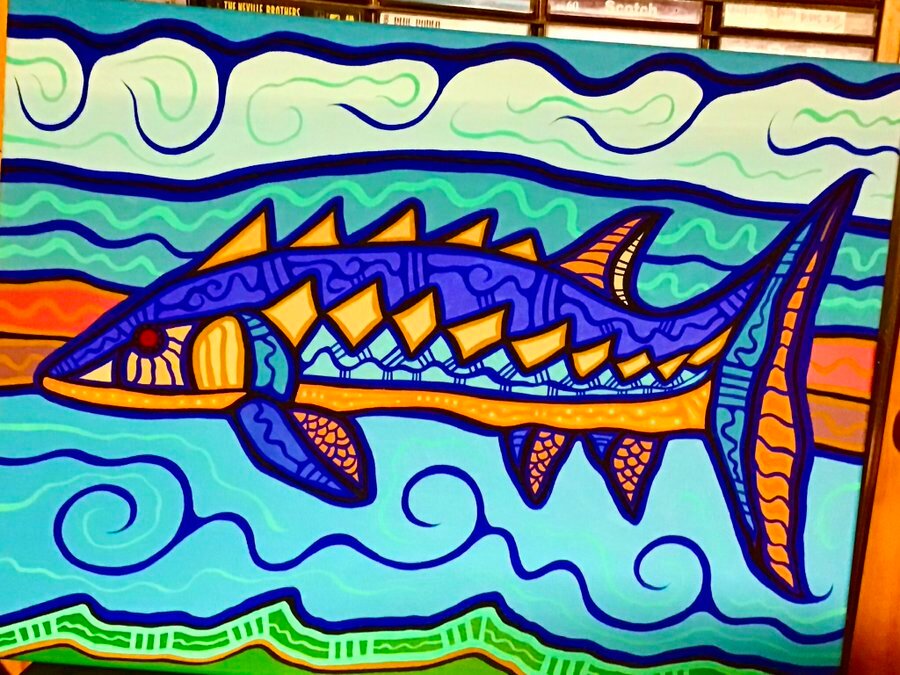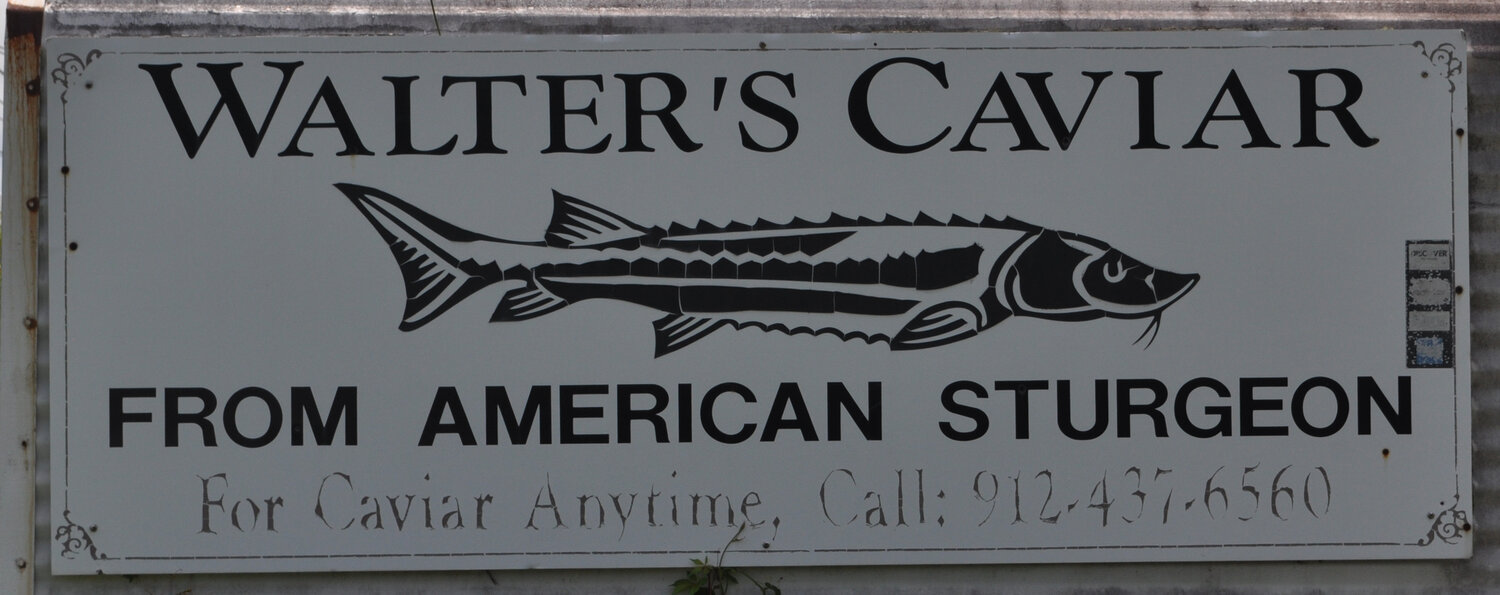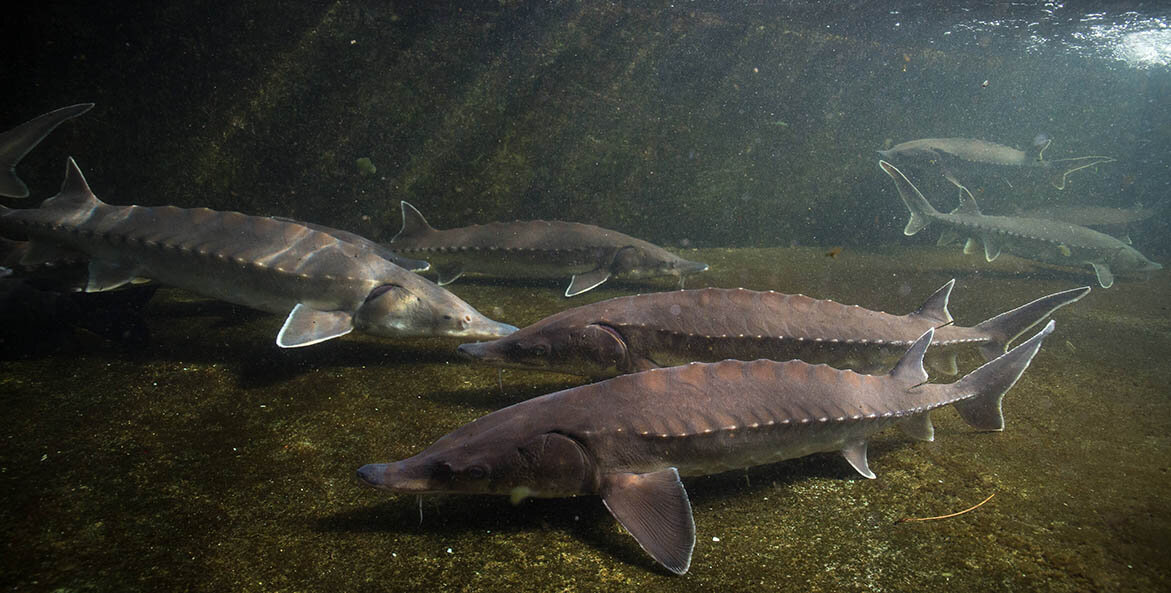The Natural History of Sturgeon in North America
A few weeks ago, under the sturgeon moon of August, I wrote about the efforts of the St. Marys Riverkeeper and partners to protect the endangered Atlantic sturgeon. This week, I am sharing stories about this primeval fish’s natural and cultural history.
Sturgeon are prehistoric fish that have been swimming in the world’s rivers and oceans for 250,000,000 years. Part of the reason sturgeon have lived so long is linked to their special spawning strategy. Sturgeons live in the ocean and estuaries throughout most of the year. However, they return to the same freshwater river they were born to spawn each spring and fall. If spring spawning conditions are not just right, sturgeon will not lay their eggs. They will return in the fall when, hopefully, conditions are better. This spawning strategy supported a steady population of sturgeon worldwide for millions of years.
Another remarkable characteristic displayed by sturgeon is their ability to return to their spawning grounds. Returning to your birthplace requires knowledge. And, that knowledge is passed to offspring by the female when she deposits her eggs upriver in freshwater. When the eggs hatch, the young fry commit to memory the elemental characteristics of the water in that specific location.
The Ojibwe word for sturgeon is Naame (pronounced naa-meh). This translates to ancient fish. Each August moon is named the sturgeon moon due to the abundance of sturgeon in coastal watersheds. The Ojibwe have a clan named for the sturgeon. The Potawatomi legends tell us of “rivers so full of sturgeon a person could walk across the water on the backs of fish,” according to Nancy Langston, Professor of Environmental History at Michigan Tech University.

Professor Langston goes on to describe how members of the Sturgeon Clan were “scholars, professors, lawyers and mediators involved in good governance” over tribal lands. The chief of the Sturgeon Clan observed the spring spawn to know how many fish they could take safely. They understood that bounty must not be measured by how much we can take but rather by how much the fishery can afford to give us.
George Washington is reported to have made recreational sport out of sturgeon fishing on the Potomac River in the 1700s. The sturgeon can grow to be very large fish weighing hundreds of pounds. Fishermen would catch these fish with a lasso and brace themselves for a “Nantucket sleigh ride” like whalemen experienced when they captured a whale.
European settlers pushing westward in the early 1800s traded with Native Americans for dried sturgeon to eat. Sturgeon became a nuisance fish as they ripped through the commercial nets of herring and trout fishermen.
Steamships burned dried sturgeon for fuel. Fishermen piled the fish up along the banks of the river, and steamship crews collected the fish as they passed by. The oil of the sturgeon was used as a substitute for sperm whale oil as it was less smoky and did not spoil as quickly. Isinglass made from sturgeon swim bladders was used as glue and a binding agent for paint. The thick skin of a sturgeon was tanned into leather.
By the late 1880s sturgeon roe was being sold as caviar. Salted sturgeon roe was considered a delicacy throughout Europe and North America. The great “Caviar Rush” spread up and down the East Coast. And soon, “black gold,” as it was known, had declined drastically. In 1887, 7 million pounds of sturgeon were caught. By 1905, that number was only 20,000 pounds in the United States.
Just after WW II, policies to protect the sturgeon were implemented. According to Langston, there was a biological belief and a political belief that we could improve the availability of sturgeon by making more fish. Scientists were able to successfully spawn sturgeon eggs in a hatchery. However, the fish did not know where to go once released in the wild. The fish spawned in the hatchery were missing important information.
While the U.S. government was hatching fish with missing knowledge, Native American tribes wanted to restore treaty rights to sacred fishing grounds. They wanted to reestablish their relationship not just with the fish but also with the watershed.
The Anishinaabe teach us that fish are our connection to the water. And, fish remind us it is our responsibility to stand up and protect all our relations within Creation. Rivers are not just for stormwater runoff. They are flowing bodies of life that sustain many species, including us.
Restoring fishing rights is useless without restoring fishing grounds. The Ojibwe asked the government for permission to co-manage watersheds. The U.S. government declined their assistance. Tribal clans continued to insist they could help restore the link between human and non-human communities. Eventually, their efforts paid off.
In 2002, a plan was hatched to restore sturgeon to several watersheds. Mobile hatcheries were developed and fish were hatched close to traditional spawning grounds. In areas where dams blocked traditional migration routes, “assisted migration” was put into play. Local tribal members monitored dams during migration season; they captured the fish in mesh nets and carried them above the dam to spawn. Their work is restoring relationships between human and non-human species.
The last commercial sturgeon fishery in our region operated out of Darien, Georgia, just north of Brunswick. Walter’s Caviar went out of business decades ago when the Atlantic sturgeon was listed as an endangered species.

It is important to conserve entire ecosystems, which include cultural, historical, spiritual, and economic uses. However, economic effects must not receive the most weight and value when evaluating present and future uses of these ecosystems.
Do your part to help the St. Marys Riverkeeper and all riverkeepers in our nation preserve these significant watersheds for future generations of human and non-human use.
As Aldo Leopold said, “We will only protect what we love and we only love what we protect.”






